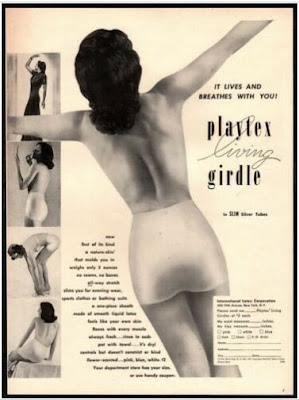Who was John Jollitt? He might be my first Jollett ancestor
to settle in Virginia, but I do not know for sure.
One thing I know for sure is that he was not a wealthy
man. Had he been a gentleman, a man of means, he could have paid his own way from
England to the colonies, about 6 pounds for a one-way ticket, which equates in
buying power to about $1423.16 today. Instead, he signed a contract, an
indenture, to work up to seven years for a Virginia planter in exchange for his
passage.
INDENTURE
 |
| from wikimedia commons |
Indentured servitude had been a common practice in England
for many years. In fact, children were often indentured to a craftsman to learn
a trade as a cooper, a shoemaker, a blacksmith, a printer, a shipbuilder, a
tailor, etc. For the master, it meant cheap labor in exchange for food, lodging,
a few clothes, and maybe something more substantial once the contract was
satisfied.
In many ways, timing was everything for John Jollitt.
England’s economy was depressed leaving both skilled and unskilled workers
unable to find jobs. Virginia, then only 30 years old, had already developed a
thriving tobacco business. There was lots of land and a need for lots of
workers. Tobacco farming was hard work that wore many people down long before “retirement
age,” not that there was such a thing then.
At first the Virginia Company paid the passage for
indentured servants to come and work company land or to rent out to planters. Then
they asked themselves why pay at all? Why not let the planters themselves pay
for their own indentured servants? The result was the Headright System. Tracts
of land called “headrights” were offered to planters and other citizens willing
to pay the transportation costs of an indentured laborer. In Virginia, anyone
who had been in the colony since May 1616 was offered 100 acres of land (two headrights
of 50 acres each); all others willing to pay the passage were granted one
headright of 50 acres.
Anyone with enough money could accumulate headrights by
providing the funds for the poor to travel to Virginia. Even if the indentured
servant did not survive the trip, the landowner could still receive a headright.
Merchants and mariners also benefited from the headright
system. They started recruiting prospective indentured servants, bargained
their indenture terms with them, and then sold the contracts to Virginia planters.
Merchants accumulated headrights that could be used to acquire land. Some even
offered small tracts of land to skilled workers willing to work as an
indentured servant.
MERCHANT SHIP
So in late summer or early fall of 1636, John Jollitt boarded
the Tristram and Jane, a merchant ship headed for Virginia to take on tobacco
that was ready for market.
 |
What a merchant ship in the 17th century
would have looked like |
The Tristram and Jane probably was typical of merchant
ships of the 17th century. They were broad and high, rather top-heavy
making them unsafe and difficult to maneuver. Most of the space was dedicated
to cargo both coming and going, so comfort for crew and passengers was not part
of the plan.
Food consisted of salted beef that had sat curing in
brine for 2 months (!), ship biscuits (“hard tack”), peas, and beer. Historians
have concluded that much of the sea-sickness was due not to the waves but to the
food.
 |
| from wikimedia commons |
FINANCING THE VOYAGE
Daniel Hopkinson was the merchant who chartered the
Tristram and Jane commanded by shipmaster Joseph Blowe. Hopkinson put together a
joint venture with 6 other men who contributed funds and/or goods which included
Sack – a kind of strong light-colored Spanish wine, candy oyle – a syrup, strong
waters – in other words alcoholic beverages, stockings, waistcoats, quince
marmalade, powdered sugar and loaf sugar, raisins, fish, cheese, and more. What wasn’t
consumed during the voyage was sold to the colonists. The partners were paid at
the end of the voyage with a proportionate share of the profit in tobacco. Hopkinson’s
account of this particular trip shows that the ship returned to England
carrying 99 hogshead of tobacco, roughly 31,800 pounds.
 |
| English measurements from wikimedia commons |
JOLLITT IN VIRGINIA
John Jollitt was passenger #46 of 74 men AND women who, looking
for a better life in the New World, likewise had signed up to be an indentured
servant.
Jollitt was turned over to Nathaniel Floyd who paid for 2
passengers, Jollitt and Richard Carter. He paid with 1100 pounds of tobacco. If
Jollitt was 23 years of age or older, he probably was required to serve only 4
years. If he were younger – and chances are he was – he would have been
required to serve all 7 years.
Somewhat surprisingly Nathaniel Floyd himself had arrived
in Virginia in 1623 at the age of 24 as an indentured servant. Not many poor
immigrants were able to rise above the lowest rung of society to become a
gentleman farmer with the means to pay someone’s transportation fees. By
November 1637, Floyd had patented 850 acres in Isle of Wight County including
the headrights of Jollitt and Carter.
FOLLOWING SERVITUDE
Once Jollitt satisfied his contract, Floyd was required
to pay Jollitt’s “freedom dues,” which might have included 25 acres of land, a
year’s worth of corn, some clothes, a cow, a few tools and a musket or other
arms.
What became of John Jollitt once he was freed is still a
mystery. I have hopes that he found land along the Northern Neck of Virginia
and that descendants worked their way up into Orange County where my confirmed
Jolletts lived, but I have found no such connection.
It is possible that John Jollitt stayed in Isle of Wight
County where soon there were multiple families carrying the surname Jolliff and
Jolly. They may very well be his descendants.
Sources:
Hiden, Martha W., ed. Accompts of the Tristram and Jane. The
Virginia Magazine of History and Biography Vol. 62, No. 4 (Oct., 1954), pp.
424-447. VA Historical Society.
“Indentured Servants in Colonial Virginia.” Encyclopedia Virginia https://encyclopediavirginia.org/entries/indentured-servants-in-colonial-virginia/
“Isle of Wight County Deeds and Other Records.” Abstracts
of Virginia Land Records. Ancestry.
Amy Johnson Crow continues to challenge genealogy
bloggers and non-bloggers alike to think about our ancestors and share a story
or photo about them. The challenge is “52 Ancestors in 52 Weeks.”
Wendy
© 2021, Wendy Mathias. All rights reserved.





















































